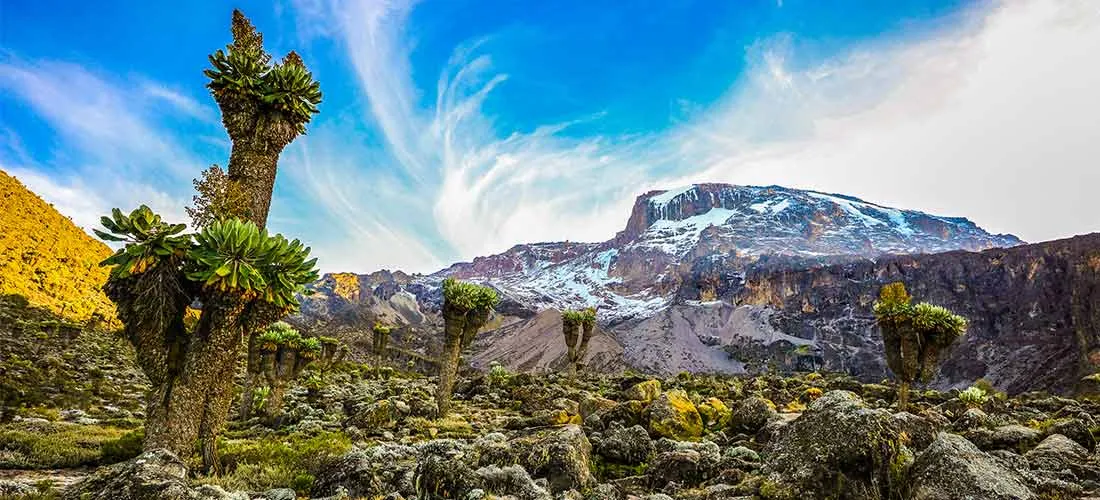6 Day Umbwe Route – Kilimanjaro Climb Package
The 6 day Umbwe Route is the most direct and steepest path up Mount Kilimanjaro, perfect for experienced and adventurous trekkers seeking a challenging, fast-paced ascent. Known for its dramatic scenery and fewer crowds, this route quickly gains altitude through dense rainforest before reaching the high alpine areas. It is physically demanding and best suited for those confident in their trekking skills and acclimatization ability.
While the success rate is lower compared to more gradual routes, the Umbwe Route rewards climbers with unmatched views, a sense of solitude, and a thrilling, less-traveled approach to the summit. Climbers will overnight in tents at designated campsites, fully supported by professional mountain crews.

At a Glance
Duration: 6 Days on the mountain
Route Type: Camping accommodation
Start Point: Umbwe Gate
End Point: Mweka Gate
Difficulty: Very strenuous
Scenery: Dense rainforest, steep ridges, moorlands, alpine desert, and glacier views
Best For: Experienced trekkers, those seeking a steep and direct climb, and adventure enthusiasts
Detailed Itinerary – 6 Day Umbwe Route
Day 1: Umbwe Gate to Umbwe Camp
Your climb begins at Umbwe Gate with registration before setting off through lush rainforest. The trail is steep and narrow, ascending sharply along a ridge. You’ll hear exotic bird calls and may spot colobus monkeys before reaching Umbwe Camp.
Day 2: Umbwe Camp to Barranco Camp
Today, the trail leaves the forest and enters moorland. The path becomes less steep but remains challenging as you ascend along the ridge with stunning views of the valleys below. You’ll reach Barranco Camp in the afternoon.
Day 3: Barranco Camp to Karanga Camp
Begin the day by tackling the famous Barranco Wall, a non-technical but steep climb that rewards you with panoramic views. The trail then undulates through ridges and valleys before arriving at Karanga Camp.
Day 4: Karanga Camp to Barafu Camp
A short but steep trek leads to Barafu Camp, the base for your summit attempt. Rest, hydrate, and prepare for the overnight climb to Uhuru Peak.
Day 5: Summit Day – Barafu Camp to Uhuru Peak, then descend to Mweka Camp
Just after midnight, start your summit push in freezing temperatures. Ascend to Stella Point (5,756m) and continue to Uhuru Peak (5,895m), the highest point in Africa. After celebrating and taking photos, descend to Barafu Camp for a short rest before continuing down to Mweka Camp.
Day 6: Mweka Camp to Mweka Gate
Descend through lush rainforest to Mweka Gate, where you’ll sign out and receive your summit certificate. Your driver will be waiting to transfer you back to your hotel.
What's Included
All Kilimanjaro National Park entry fees
All camping accommodations during the climb
Professional mountain guides, porters, and cook
All meals on the mountain
Drinking water and hot drinks
Rescue fees
Oxygen cylinder and first-aid kit
Pre- and post-trek briefing
Transportation to and from Umbwe Gate
Summit certificate (gold for Uhuru, green for Stella Point)
What's Not Included
Flights and visas
Travel insurance
Tips for guides and porters
Personal trekking gear (sleeping bags, boots, etc.)
Accommodation before and after the trek (can be added on request)
Extra snacks and beverages
Portable toilets (available at extra cost)
